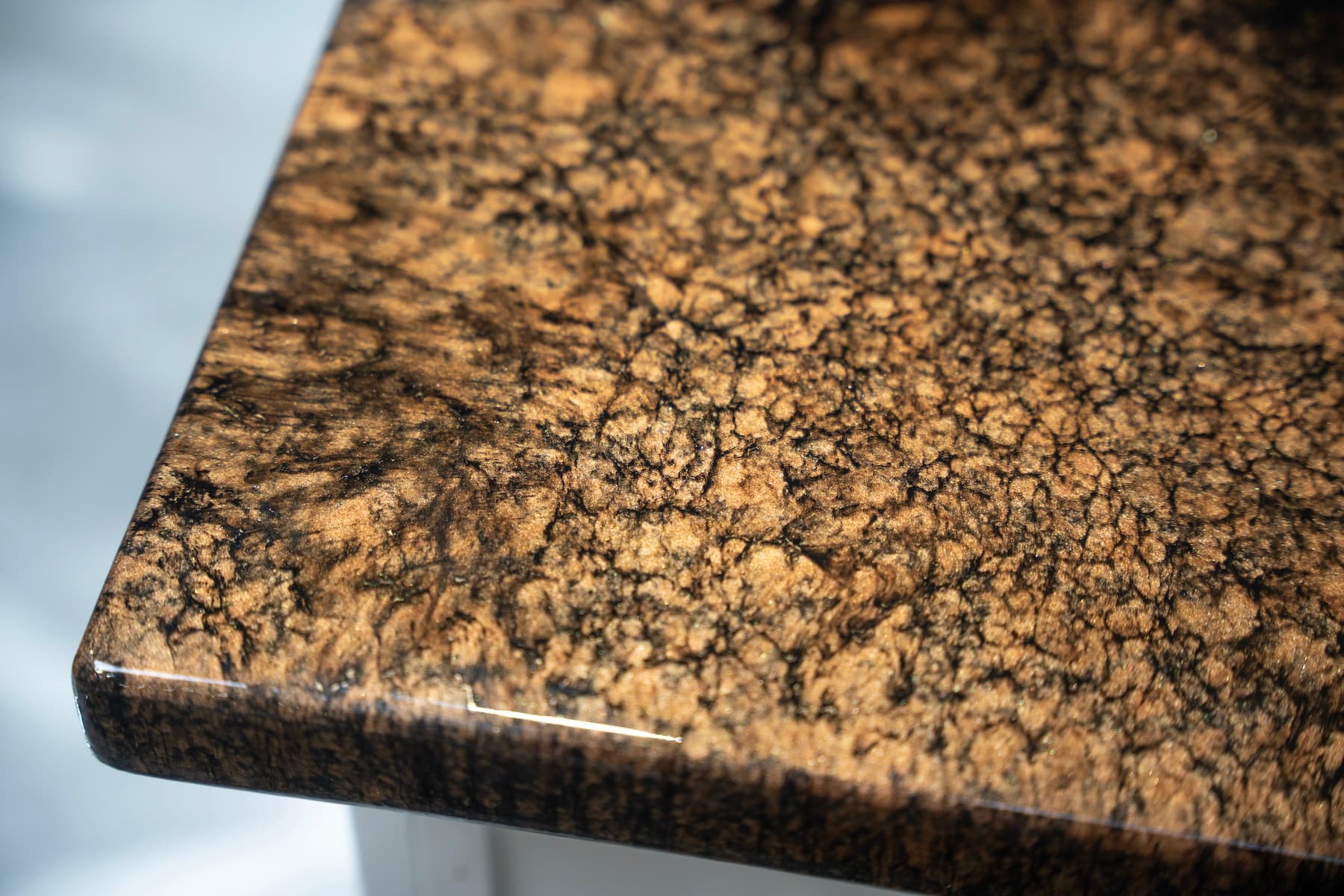


Transform your countertops into a rich, granite-inspired masterpiece. This step-by-step tutorial will show you how to achieve the classic look of Baltic Brown granite using dark tones, metallic pigments, and unique spray techniques. Perfect for DIYers who want to create a durable, high-gloss surface with the depth and elegance of natural stone. With detailed instructions and helpful tips, you’ll learn how to apply epoxy, layer metallics, and use the Granite Effect technique to create realistic fractures and color variation. Ready to give your countertops a luxurious upgrade? Let’s get started! Follow along with our guide and video below.
Before you start:
Whether you’re pouring epoxy over an existing countertop—like tile or laminate—or fabricating a new surface from MDF, each approach has unique preparation steps to ensure maximum adhesion. For detailed instructions, check out our substrate specific tutorials below. This color technique begins with your surface fully prepped and ready for a stunning epoxy transformation.
Sand and smooth any bumps or rough areas, then clean thoroughly to remove all dust and debris. For new MDF countertops, place them on a level surface and apply two coats of Stone Coat Countertop Black Epoxy Undercoat. Allow the second coat to dry for at least 4 hours. This specially formulated, ammonia-free undercoat bonds perfectly with our Countertop Epoxies and substrate materials for the best results (other products may not achieve the same effect). Once the undercoat is dry, lightly sand with 220-grit if needed and clean off any remaining dust.
With the undercoat completely dry, prepare the Polycolor Metallic Powders by mixing the powders into separate spray bottles.
Prepare Metallic Sprays:
Apply Metallic Mists:
Allow to Dry: Let the metallic alcohol mixtures dry completely before proceeding. A heat gun will speed up the alcohol drying process, do not use a torch to speed up the drying process.
Apply Clear Epoxy: Measure 3 ounces per square foot of countertops to be covered. Pour in Part B first at a 1:1 ratio by volume followed by Part A. Mix for 90 seconds with a paddle mixer and drill, scrape the sides and bottom of the mixing bucket with a paint stick. Mix again for an additional 40-90 seconds. Pour the mixed epoxy into the center of your countertop in a large ribbon.
Using light pressure spread the mixed epoxy over the project and edges with your gloved hands. Use a heat source like a propane torch or a heat gun to remove air bubbles by sweeping the surface 2’’ from the surface.
Apply the Granite Effect: For the Granite Effect, we recommend using Black Gloss Rust-Oleum Spray Paint. Work in 3-4 foot sections, fogging the paint over the surface with varying transparency—some areas heavily misted, others lighter. Immediately after spraying, mist the area with 91% isopropyl alcohol (either clear or tinted with metallic powders) to create a Granite Fracturing effect. Vary the droplet sizes for added dimension. Let the alcohol evaporate before applying another mist as needed. Continue this process until the entire countertop is fogged and fractured to your desired look.
Let the Project Cure: After completing the Granite Effect, use a heat source to remove any remaining air bubbles. The Stone Coat Countertop Epoxy will cure and be ready for the next layer in 18-24 hours with no need to sand. If curing exceeds 24 hours, lightly hand sand the surface with 220-320 grit sandpaper to ensure good adhesion for the next epoxy layer.
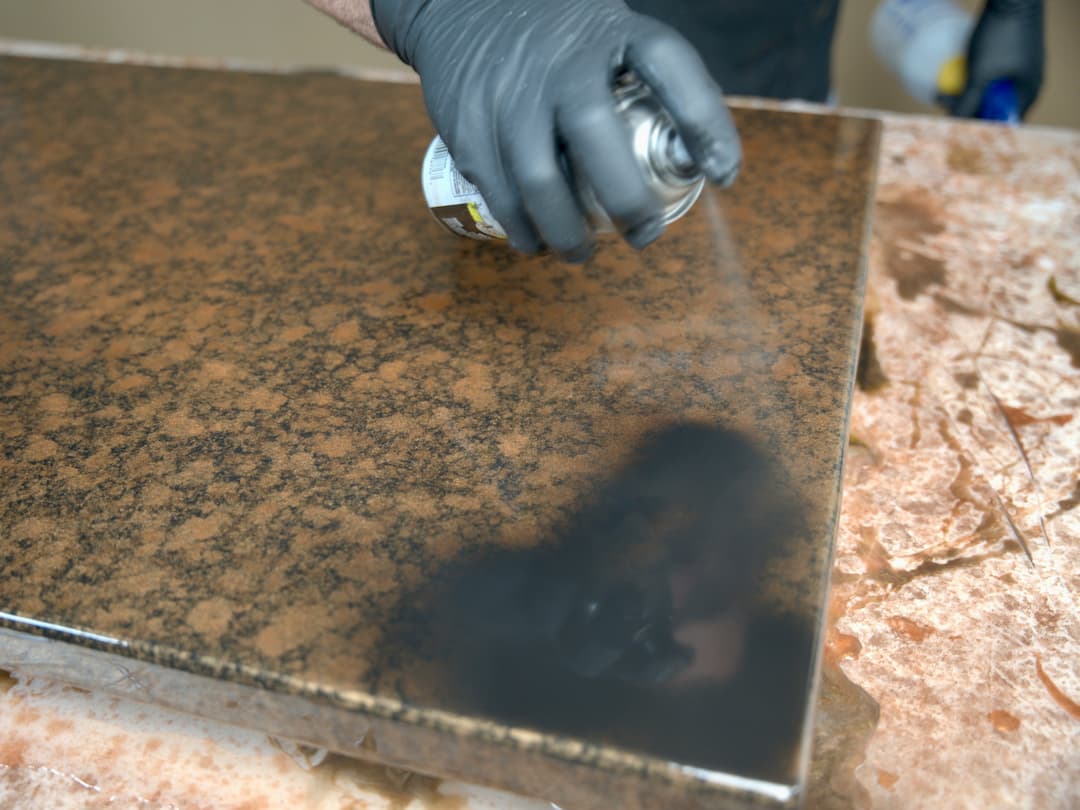
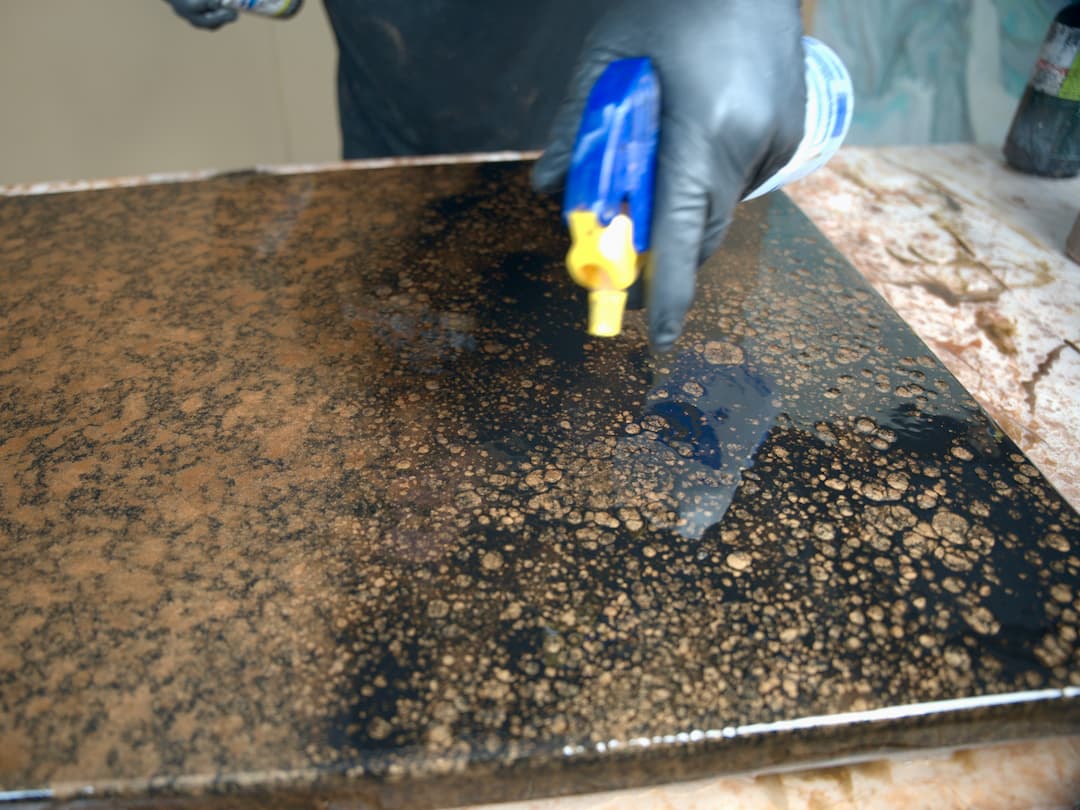
Seal and protect your design with a clear coat of Stone Coat Countertop Epoxy. When using the Baltic Brown Granite Epoxy Kit, you will have enough leftover Countertop Epoxy for the clear coat at 3 oz per square foot.
Mix Clear Epoxy: Follow the instructions to mix the clear Stone Coat Countertop Epoxy thoroughly using a drill with a paddle mixer.
Pour the Epoxy: Pour the mixed epoxy into the center of your countertop in a large ribbon. Evenly Spread the Epoxy & Remove Air Bubbles. Use Stone Coat’s 1/8’’ x 1/8’’ square notch trowel to spread epoxy evenly across the surface. Use Stone Coat’s Chop Brush and dap the surface of the project to remove the subtle trowel lines left behind spreading the material evenly. Take time to check the surface for any lost brush bristles. Remove them before the epoxy cures.
Ensure full coverage for a smooth, professional finish. Use a heat source to eliminate air bubbles trapped during epoxy mixing and spreading. A propane torch is recommended for the most efficient bubble removal, but a heat gun works too. Hold the torch head 2” from the surface and sweep it across in a steady motion, covering the entire area. You'll see bubbles popping—slightly overlapping each pass to ensure no bubbles are missed.
For maximum durability, we recommend coming back overtop the clear coat of epoxy once cured with a scratch-resistant protective layer of our Ultimate Top Coat. The Ultimate Top Coat will need to be purchased separately to achieve our highest performing finish.
For high-detailed written instructions, see our Ultimate Top Coat Instructions HERE.
Enjoy your new countertops!
From all of us here at Stone Coat Countertops,
You Got This!
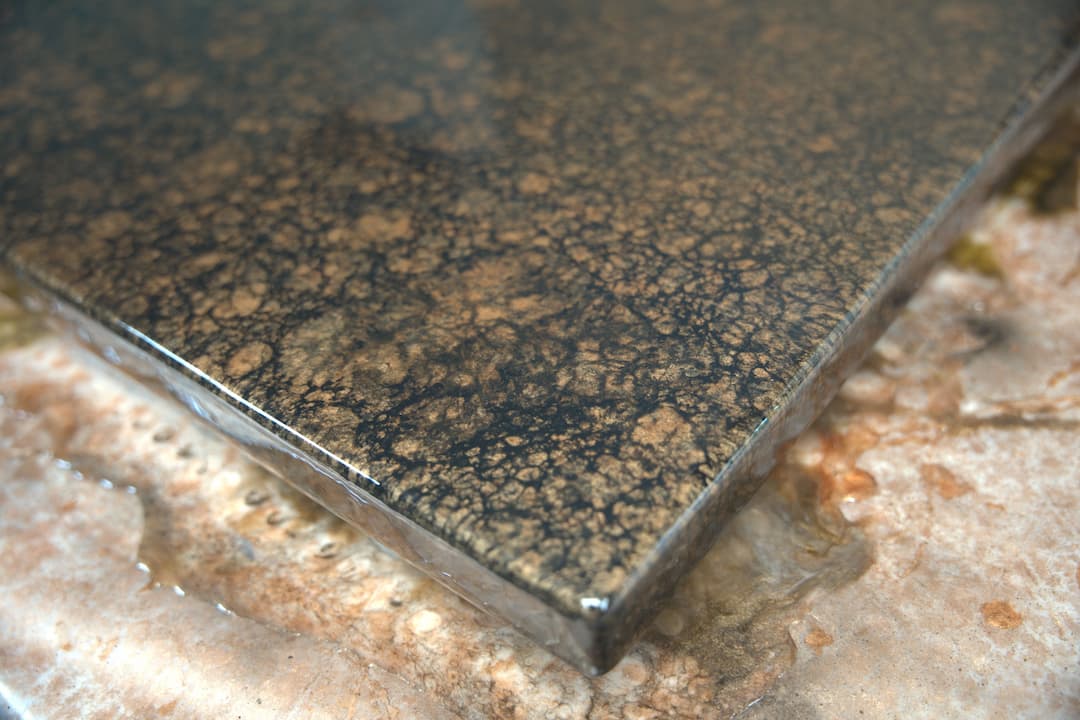
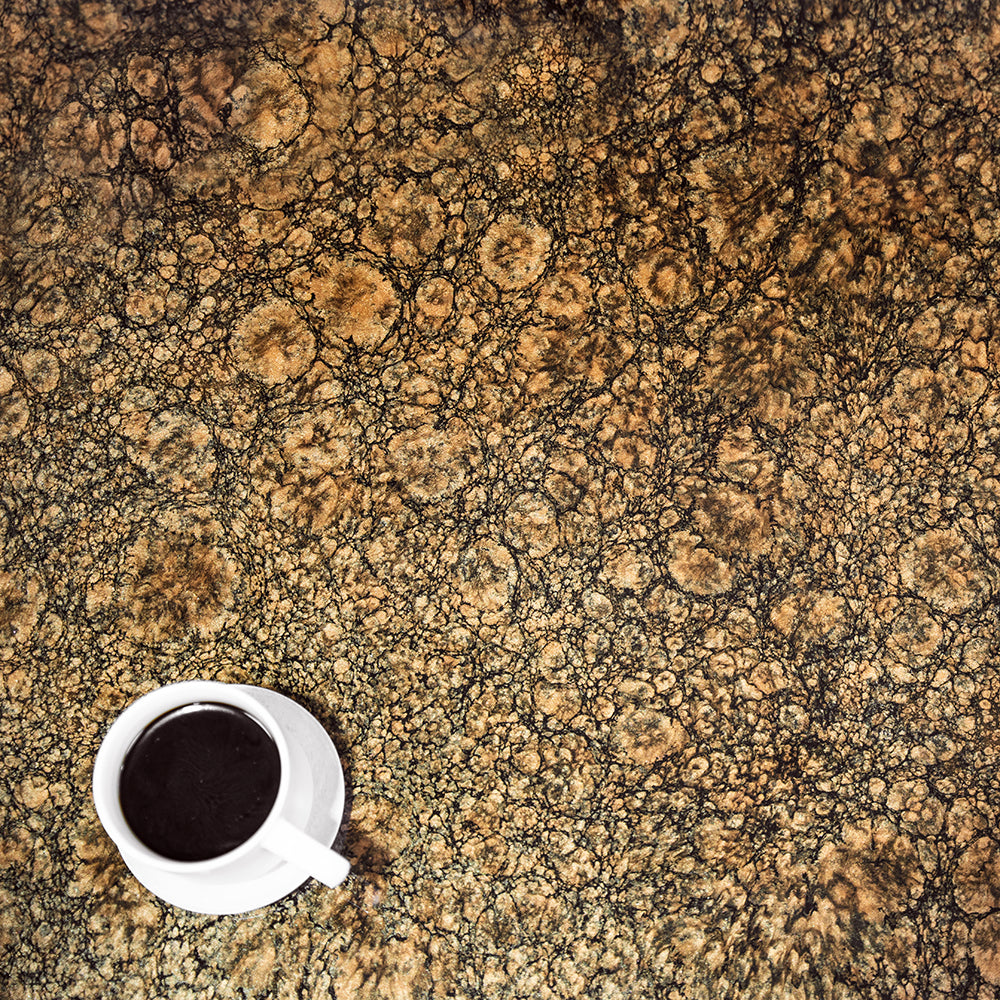
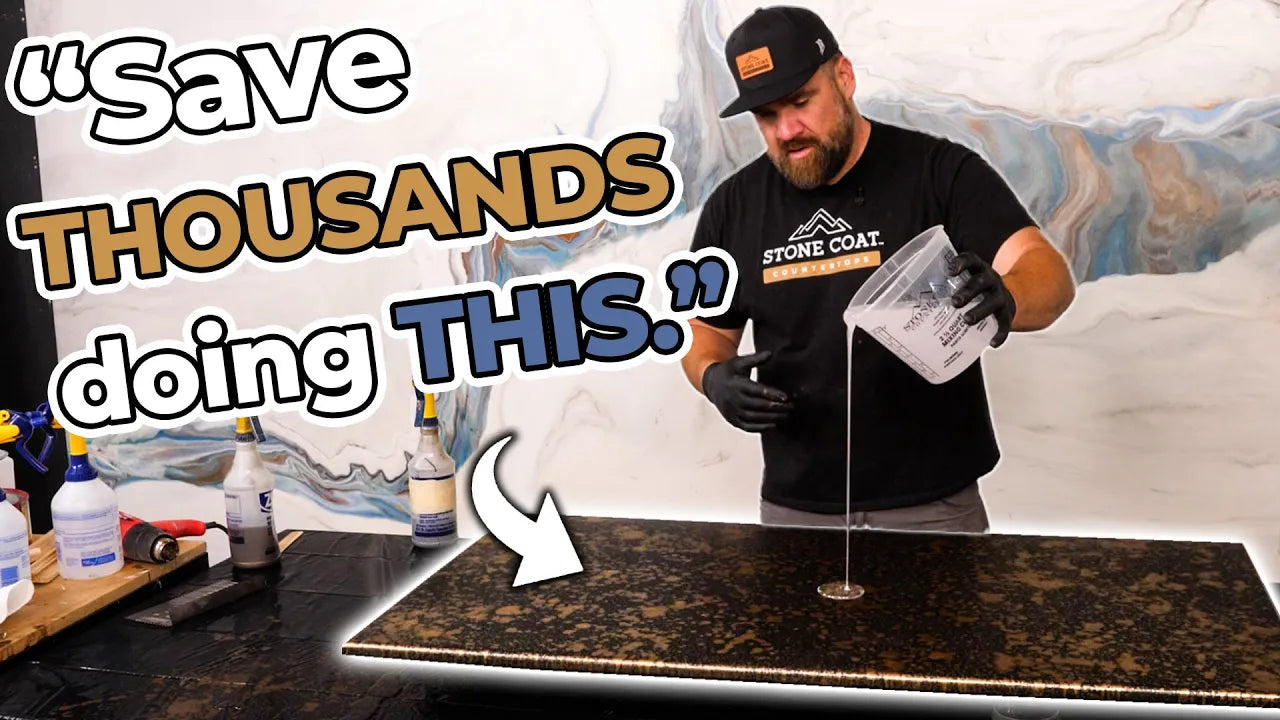
Follow the tutorial below that applies to your project:


